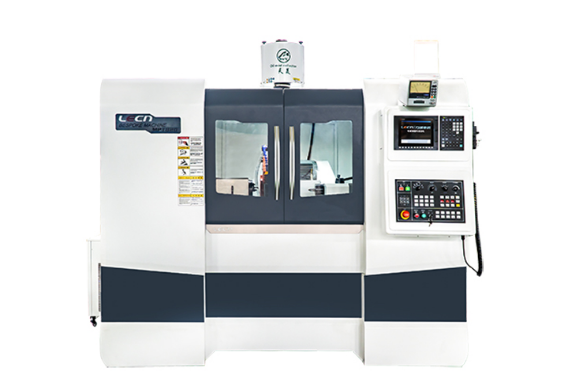CNC Cylindrical Grinding Machine Buyers Guide: What They Are & How They Work
Buying a CNC cylindrical grinding machine can be a significant investment for any manufacturing operation. To make an informed decision, it's crucial to understand what CNC cylindrical grinding machines are, how they work. This buyer's guide aims to provide an overview of CNC cylindrical grinding machines.
What is a CNC Cylindrical Grinding Machine?
A CNC cylindrical grinding machine is a precision machining tool used to shape the external surface of an object. It is a versatile machine that can perform various grinding operations with high accuracy and efficiency. The term "CNC" stands for Computer Numerical Control, which means that the machine is controlled by a computer program to execute specific tasks and movements.
CNC cylindrical grinding machines are commonly used in the manufacturing industry for grinding cylindrical and non-cylindrical components such as shafts, rods, bearings, and sleeves. The machine uses an abrasive grinding wheel as the cutting tool, which rotates at high speed and applies pressure against the workpiece to remove material. The machine is capable of achieving tight tolerances and consistent results, making it an essential tool for producing high-quality components.
How do CNC Cylindrical Grinding Machines Work?
CNC cylindrical grinding machines operate based on a series of steps that involve the setup, programming, and execution of grinding operations. Let's explore how they work in detail:
1. Workpiece Setup:
The first step in using a CNC cylindrical grinders is to set up the workpiece. The workpiece, which can be a cylindrical component, is securely mounted on the workpiece holding device or center. The center ensures proper alignment and rotational movement during the grinding process.
2. Machine Setup:
Once the workpiece is set up, the machine needs to be prepared for grinding. This involves mounting the grinding wheel on the spindle of the wheelhead and setting up the necessary grinding parameters such as wheel speed, feed rate, and depth of cut. These parameters are determined based on the material and geometry of the workpiece and the desired surface finish.
3. Programming:
The next step is to program the CNC cylindrical grinding machine. The programming is typically done using specialized software that generates a machine-readable code known as G-code. The G-code contains a series of instructions that control the movements of the machine, including the grinding wheel and the workpiece.
See also:Machinery
The programming includes defining the grinding operations to be performed, such as plunge grinding, traverse grinding, or shoulder grinding. The programmer specifies the grinding paths, dimensions, and other parameters required for each operation. The G-code is then transferred to the control panel of the machine.
4. Machine Calibration:
Before starting the actual grinding process, the machine needs to be calibrated to ensure accurate positioning and feed control. This involves homing the machine's axes, which means moving them to a predefined reference position. The homing process establishes the zero positions for the machine's axes and allows for precise positioning during grinding.
5. Grinding Execution:
With the workpiece set up, machine calibrated, and programming in place, the grinding process can begin. The operator starts the machine and monitors the grinding operation from the control panel.
The CNC control system of the machine interprets the G-code instructions and sends signals to the servo motors that drive the machine's axes. The servo motors move the wheelhead and the table according to the programmed paths and parameters.
During the grinding process, the grinding wheel rotates at high speed, while the workpiece rotates or moves linearly depending on the specific operation. The grinding wheel makes contact with the workpiece surface and removes material through abrasion. The pressure and feed rate are carefully controlled to achieve the desired material removal and surface finish.
The CNC control system continuously monitors the position of the grinding wheel and the workpiece using encoders. This feedback allows for real-time adjustments and ensures precise control over the grinding process. The control system also monitors and adjusts the grinding parameters, such as wheel speed and feed rate, to optimize the process and maintain consistency.
6. Finishing and Inspection:
Once the grinding process is complete, the operator stops the machine, and the finished workpiece is removed from the machine. Depending on the application, additional finishing operations such as deburring or polishing may be required.
In conclusion, a CNC cylindrical grinding machine is a precision tool that can significantly enhance your manufacturing capabilities. By understanding how these machines work in this buyer's guide, you can make an informed decision when purchasing a CNC cylindrical grinding machine that best suits your specific needs and requirements.


